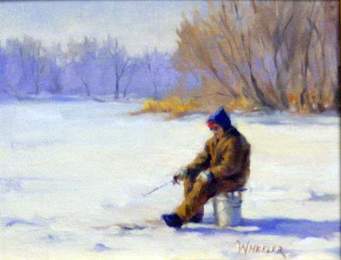
by Flagship Staff | Jan 25, 2018 | Blog
During the winter months, frozen lakes host a flurry of outdoor activities. Anglers, ice shanties, and recreational vehicles are a common scene.
While many enjoy winter activities on the ice, these activities can lead to serious injury if the proper precautions aren’t taken.
Before you head out on the ice this winter, check out these safety tips.
1. Share your fishing plans. It’s a good idea to share your plans with your family, friends, or neighbors. Let them know:
The name of the lake you’ll be fishing on;
The location of your fishing hot spot (i.e. north shore, south shore, etc.); and
When you plan to arrive home.
If the fish are actively biting and you decide to stay out longer, notify them of your change in plans.
2. Bring a friend. When going ice fishing, never go alone. A friend can:
Provide an extra set of hands;
Help you stay focused on safety; and
Alert authorities if something goes wrong.
3. Talk to the locals. They can provide information on ice thickness, water movement, and other information pertinent to the lake.
4. Follow these ice thickness guidelines. Remember, ice is never 100% safe. Ice thickness can change very quickly.
2″ or less – STAY OFF!
4″ – Ice fishing or other activities on foot
5″ – Snowmobile or ATV
8″ – 12″ – Car or small pickup
12″ – 15″ – Medium truck
5. Purchase a flotation suit. A flotation suit is the most important item you can buy. If you fall through the ice, a flotation suit will keep you warm and make it easier to escape the frigid water.
6. Carry a pair of ice picks/rescue claws. Keep a quality pair of ice picks with you at all times. If you fall through the ice, ice picks make it possible for you to climb out. Don’t skimp on this life saving device.
7. Carry a throw rope. A throw rope can be used to pull a fellow angler to safety.
8. Leave the lake before dark. Navigation at night can be treacherous. Without familiar visuals or a navigation device, you can become disorientated making it difficult to find your way off the ice.
9. Install proper ventilation. If your ice shanty is heated, make sure you have good ventilation. A poorly ventilated shanty can lead to carbon monoxide poisoning.
10. Bring a portable power bank battery charger. Cold temperatures can quickly drain your smartphone battery. A quality charger can save the day. I would recommend buying a high capacity charger. While they’re a bit more expensive, they can provide multiple charges, and can charge multiple phones at one time. To avoid permanent damage, turn your phone off in extremely cold temperatures.
11. Respect the ice auger. Ice augers are built to drill holes quickly and efficiently. Before operating it for the first time, read the owner’s manual. In addition, avoid wearing loose clothing or jewelry. When you are finished with the auger, store it in a safe place. Lastly, always maintain sharp blades to avoid injury while drilling.
12. Stay hydrated. Staying hydrated is very important. Dehydration can happen quickly in cold weather because your body is working hard to stay warm. Check out “8 Tips for Hydrating in Cold Weather.”
13. Layer up. Selecting the right number of layers is important. Beginners to winter activities tend to underdress, especially if it’s a sunny day. Choosing the right number of layers, based on temperature, can only be accomplished through trial and error. Before venturing out on the ice practice at home.
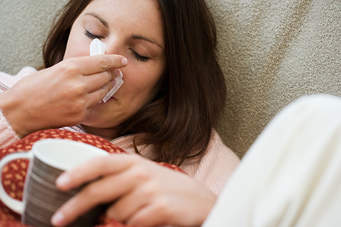
by Flagship Staff | Jan 17, 2018 | Blog
Whether at work, the grocery store, or school, it’s very common to hear sounds of the season. Unfortunately, I’m referring to sneezes, coughs, and sniffles.
Between December and March, millions of people suffer from the common cold, influenza (flu), pertussis (whooping cough), and Norovirus (stomach bug). Depending on the severity of the season, people can be affected until May.
You may ask yourself why so many people are sick during the winter. Is cold winter weather really to blame? Medical experts believe cold weather does not actually make us sick. What makes us sick is the change in our lifestyle. Germs are always around us. However, when cold weather sets in, our windows stay closed, the heat goes on, and we spend more time indoors (i.e. our homes, shopping malls, sporting events, concerts etc.). Infected air in our homes as well as large groups of people in an area makes the transmission of germs easier.
Because I have family members who work in healthcare, I know that many people are confused about the symptoms associated with these illnesses.
Below is a brief explanation of the flu, as well as how it’s spread and treated. To learn more about symptoms of the common cold, the flu, and whooping cough.
I hope that being able to identify the differences between each illness, helps you and your family members get the appropriate care you need to get on the road to recovery.
Influenza (flu) – When people experience nausea, vomiting, or diarrhea, they often refer to this as the flu. That’s incorrect. The term flu refers to influenza, which is a respiratory disease. Different viruses, bacteria, or parasites cause gastrointestinal distress.
How’s the flu spread? It’s spread by airborne droplets of moisture that float through the air when a person sneezes, coughs, or talks. When the droplets encounter your eyes, nose, or mouth, infection can occur. Illness symptoms usually appear within 1-3 days.
How’s the flu treated? Depending on the severity of the illness, your physician may administer anti-viral drugs. Otherwise, some remedies include:
Bed rest;
Drinking plenty of fluids; and
Taking pain relievers.

by Flagship Staff | Jan 9, 2018 | Blog
Hoarding has not only become a popular topic for media coverage, it’s also a trending topic in the insurance industry. Because it’s more prevalent in our society today, Jenny Bischoff senior personal lines underwriter will explain the practice of hoarding and how it affects insurance coverage and claims.
Approximately 1 in 20 Americans have hoarding tendencies. There are five levels of hoarding. They range from Level One where clutter isn’t excessive and all doors and stairways are still accessible, to Level Five where clutter is excessive, multiple appliances are broken, and the home has even suffered structural damage.
Many people collect things and having a large collection that’s properly stored and/or displayed isn’t hoarding. Like collectors, hoarders keep things that are important to them. The difference is that the items hoarders collect typically have no value and they collect excessive amounts. With only so much space in the home, accumulation often leads to losing access to such areas as stairs and exits. Hoarders also stop inviting family and friends over and generally won’t allow anyone inside.
Some of the risks associated with homes occupied by hoarders include water damage, mold growth, structural damage, and increased trip and fall hazards. Let’s review a few different scenarios of serious situations that could cause loss to the property, to those living inside, and to others who enter the home.
1.Fire Risk. When a home has become so filled with possessions that there’s no access to exits and stairs, there’s a real risk of death should a fire start in the home. Occupants won’t be able to easily escape. First responders won’t be unable to locate people and animals to help them get out; blocked exits and stairs also increase the risk to their own safety.
2.Water Damage. If there’s a leak in the kitchen, but the kitchen is so filled with “stuff,” the inhabitants can’t see where the water’s accumulating. This could result in a large claim for water damage to the home, as well as to the insured’s possessions. It could also eventually lead to mold growth. Even if the hoarder knows a plumbing issue exists — and where — they typically won’t call a plumber to fix the problem because they don’t want anyone in the home. This could mean plumbing problems go unfixed for so long, the facilities in the home (bathrooms, kitchen, etc.) become unusable.
3.Structural Damage. Sometimes a hoarder has such a huge accumulation of belongings, the home can no longer bear the weight and this leads to structural damage.
4.Fall Hazards. The number of items in the home, and the way they’re stored, can create an increased liability risk of trip and fall hazards. In addition, a pile of “stuff” could fall on top of the inhabitants or visitors.
When an insurance carrier is made aware of a hoarding issue, the underwriter will typically decide to stop providing coverage. The liability, fire, mold, and water damage risks associated with hoarding are reason enough, but the bigger issue is that there’s no easy or quick fix. A hoarder may be able to get the home cleaned up enough that it appears insurable, but for how long?
While it’s easy to point out the risks and liabilities associated with a home occupied by a hoarder, it’s not easy to discuss this problem with the hoarder. Reality TV makes light of the situation by turning it into an hour of entertainment for those not afflicted by this disease, but it’s a very serious condition. If you know someone who has this disease, there are resources to help you help them, and professional help is the way to go. Local resources are also available; here are a few options:
Hoardingcleanup.com, 888-577-7206
Hoarding.iocdf.org
Hoarders.com, 800-462-7337 (live help line)
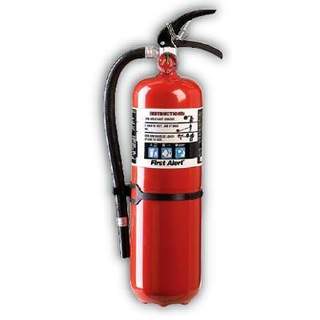
by Flagship Staff | Jan 2, 2018 | Blog
In 1925, President Calvin Coolidge proclaimed the first National Fire Prevention Week. According to the National Archives and Records Administrations Library Information Center, this is the longest running public health observance in history. This year’s observance is Sunday, October 8 through Saturday, October 14.
According to the National Fire Protection Association (NFPA) 358,500 home structure fires occurred from 2011 through 2015. On average, these fires caused:
-2,510 civilian deaths;
-12,300 civilian injuries; and
-$6.7 billion in damage.
The leading causes of home fires were:
-Cooking equipment;
-Heating equipment;
-Electrical;
-Intentional; and
-Smoking materials.
On a regular basis, we hear about the importance of keeping our smoke detectors in proper working order. However, we don’t hear a lot about other fire prevention methods. Therefore, I thought this would be a good opportunity to discuss choosing a fire extinguisher for your home.
Having a fire extinguisher available can be beneficial. However, there are some things to consider before purchasing one.
1.Your main priority should be getting out of your home safely. From the time your smoke alarm sounds, experts say you have two minutes or less to get out.
2.Don’t exit with your family, and then go back in to start extinguishing the fire.
3.If a small fire starts in your presence, a fire extinguisher can help prevent it from spreading.
When choosing a fire extinguisher for your home, here’s what you need to know.
There are five types of fire extinguishers. They are A, B, C, D, and K. A, B, and C are often found in homes and businesses.
Type A extinguishers – Used on ordinary materials, such as cloth, paper, and wood.
Type B extinguishers – Used on combustible and flammable liquids, such as grease, gasoline, oil, and oil-based paints.
Type C extinguishers – Used on electrical equipment, such as appliances, tools, and other items that are plugged in.
Type D extinguishers – Used with flammable metals and are found in factories.
Type K extinguishers – Can be used on vegetable oils, animal oils, and fats in cooking appliances. These extinguishers are used in commercial kitchens, such as restaurants and cafeterias.
For home use, you can select a multi-purpose (A, B, C) extinguisher.
The next thing to consider is weight. The size of the extinguisher needed depends on its use. Common extinguishers can weigh from two to ten pounds.
What size extinguisher is right for your family?
A ten-pound extinguisher is more appropriate in places where fire can spread in size more quickly. This size extinguisher would be ideal for a garage or workshop.
A five-pound extinguisher can be stored in your kitchen or laundry room. Since most home fires start in the kitchen, I would recommend storing it in a nearby pantry or cupboard.
A two-pound extinguisher can be stored in your car.
How do you use a fire extinguisher?
The NFPA suggests remembering the acronym PASS.
P = Pull the pin and hold the extinguisher nozzle away from you.
A = Aim low by pointing at the base of the fire.
S = Squeeze the lever slowly and at a controlled pace.
S = Sweep the nozzle from side-to-side.
If you purchase a fire extinguisher for your home, please read the instructions. Instructions can provide additional usage tips, as well as directions for how to maintain your extinguisher. Also, contact your local fire department. They may offer classes that allow you to practice using one.
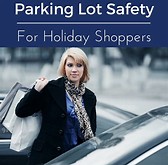
by Flagship Staff | Dec 26, 2017 | Blog
Retailers love this time of year when consumers venture out in droves to do their Christmas shopping. This time period can make or break their entire year.
For the rest of us, increased shopping means more congestion on our roadways and in the store parking lots. This increased congestion can lead to frustration, aggravation, and fender benders. In addition, the weather can wreak havoc on already-crowded parking lots, resulting in slips and falls and difficulty pushing a shopping cart or stroller.
Here are some safety tips to keep in mind as you venture out this holiday season to find that perfect gift.
1.Park further away. If your family is like mine, they’re always telling me to find the closest parking spot, and if I don’t, I hear about it. However, during this congested time of year, it may be wise to park further away from the store. If you do this: Backing out will be easier because there will be less car and pedestrian traffic.
You may be able to avoid unwanted door dings.
There’s more space for you and your family to exit and enter the vehicle.
You can burn off a few extra calories which isn’t a bad thing this time of year.
2.Light it up. Many cars today come with daytime running lights. If your car doesn’t, turn on your headlights while in a parking lot or parking garage during the daylight hours. Turning your lights on makes it easier to be seen by other cars and pedestrians.
3.SUVs and minivans, oh my! If possible, be on the lookout for these vehicles. While you may find a close parking spot in between them, trying to back out after your shopping spree may be difficult.
4.Don’t rely solely on backup cameras. While backup cameras are a nice addition to cars, they only allow you to see what’s directly behind you. Before backing out, you should still turn your head to survey the area around you. If it’s clear, you can slowly back out, keeping an eye on the display. If you’re travelling with friends or family, I would encourage you to ask them to keep an eye out. If the parking spot in front of you opens up, pull through. Unfortunately, I know people who have backed into cars even with an audible alert and camera.
5.Pay attention to your surroundings. Before leaving your car or store, scan the area. Be on the lookout for anything that looks strange. In addition, keep an eye on the pavement. Watch for elevation changes or potholes that could cause you to slip and fall. If something doesn’t feel right, consider asking store staff or security for assistance. Lastly, take out the earbuds and avoid texting or trying to make a phone call until you’re safely in the store or your car. Distracted shoppers are easy targets.
6.Make eye contact. If you’re using a pedestrian crossing at your favorite mall, make eye contact with the driver to make sure they see you and are going to allow you to cross. Even though pedestrians have the right of way, never assume drivers see you. Since the weather is still somewhat mild, I have been biking to work. On the front of my bike, I have a bright headlight that also flashes. Every day I am amazed at the number of people who still don’t see me.
7.Inspect your car. Before getting in your car, take a peak in the back seat to make sure a stranger isn’t waiting for you.
8.Wear appropriate clothing. Consider wearing lighter or reflective clothing and shoes with good traction.
9.Shop with a friend or family member. If your plan is to shop until you drop, consider taking somebody with you. Carrying many bags or packages can make you an easy target. In addition, consider leaving small children at home or taking someone with you to help them navigate safely through the parking lot. Trying to push a stroller, carrying packages, watching other kids and looking for car keys can be difficult and dangerous.
If you’re involved in a car accident in a parking lot and police aren’t contacted, be sure to gather as much information as possible, including the name, phone number, address, and insurance information of the other driver(s), and the color, type and license plate number of the vehicle(s). If there are witnesses, get their contact information, as well. And take photos, if possible, to avoid fraudulent claims later on.
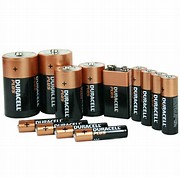
by Flagship Staff | Dec 22, 2017 | Blog
Currently, many of us are frantically buying and wrapping presents in time for Christmas. When Christmas morning arrives, our kids are filled with anticipation and excitement. That can all come to a screeching halt if you forgot to buy batteries.
When I was a kid, C and D batteries along with trusty 9 volts took care of running a lot of my toys. Fast forward to today, and our homes are filled with electronic devices that use many different types of batteries.
Button batteries are commonly used today and can be dangerous to children. Button batteries are round small batteries that are used in a variety of devices such as:
-Remote controls;
-Games;
-Toys;
-Hearing aids;
-Calculators;
-Bathroom scales;
-Musical greeting cards;
-Key fobs;
-Ornaments; and
-Electronic jewelry
If these small batteries are swallowed or are placed in the nose or ear, serious injury can occur. Once placed in the body, these little batteries send out a current that begins to burn the body.
Because I don’t have small children, I wasn’t aware of the dangers these little batteries possess. If your child swallows a button battery, watch for:
-Fever;
-Irritability;
-No interest in eating or drinking;
-Throat pain; and
-Vomiting
If it appears your child may have swallowed a button battery, go to your local Hospital’s emergency department or contact the Poison Center at 1-800-222-1222. The American Association of Poison Control Centers supports 55 poison centers across the nation. The Poison Help Line offers free, confidential, medical advice 24 hours a day 7 days a week.
Here are some battery safety tips to keep your family safe this holiday season.
1. Adhere to manufacturer’s instructions and recommendations.
2. Periodically check toys for leaking batteries or corrosion around the battery posts.
3. Don’t mix and match batteries. Replace all batteries in a device at the same time with like batteries.
4. Don’t do what my brother and I tried when we were kids. Don’t crush batteries with a hammer or try and light them on fire.
5 . Store batteries out of reach from small children.
Rechargeable battery safety tips
1. Don’t overcharge. Before charging the batteries, read the instruction on how long batteries should charge. Also, try to figure out if the charger you’re using has an automatic shutoff when the batteries reach full charge.
2. Charge nearby. If you’re re-charging batteries for your Xbox controller, plug in the charger near you. This way you can keep an eye on them. A battery fire could occur very quickly if for some reason the batteries overheat.
3. Good ventilation. Plug in the charger in a place that allows for appropriate airflow around the charger. Also, keep the charger out of direct sunlight.
4. Don’t mix and match. Don’t use different rechargeable batteries in your devices or charger. When it is time to change the batteries, replace them all at once with new batteries of the same type. Also, don’t put a variety of batteries in the charger. Each charger is made for a specific battery type.
5. Recycle. When your rechargeable batteries reach their end of life, don’t just throw them in the garbage. Electronic stores near you may collect them and dispose of them properly. At West Bend, we have a place where we can drop off batteries, eyeglasses and old cellular phones so that they get disposed of safely.
Smart phone charging safety tips
1. Genuine Parts. Charge your phones with genuine parts or reputable alternative brands. A cheap cord may not be the best for your phone.
2. Stay out of bed. Avoid charging your phone between your blankets. This can lead to a fire.
3. Don’t drain your phone. To prolong your battery life, try to keep your battery between 50 and 80 percent. Don’t let your phone drain down to zero. Charging your phone often from 0 percent to 100 percent is hard on the battery and could reduce its life expectancy.
I hope these tips help keep your family safe during the holiday season.
Page 21 of 35« First«...10...1920212223...30...»Last »






